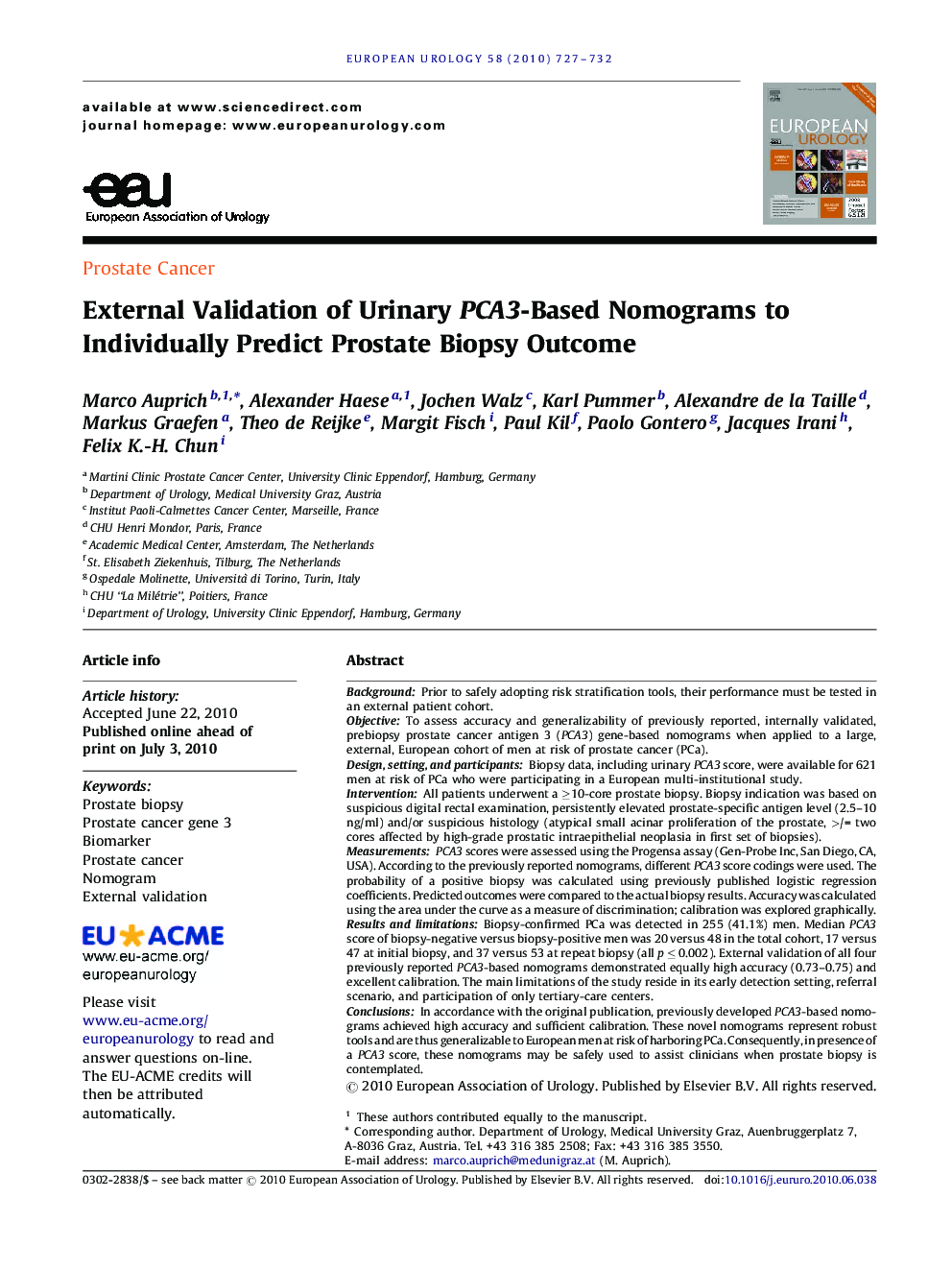| کد مقاله | کد نشریه | سال انتشار | مقاله انگلیسی | نسخه تمام متن |
|---|---|---|---|---|
| 3926248 | 1253145 | 2010 | 6 صفحه PDF | دانلود رایگان |

BackgroundPrior to safely adopting risk stratification tools, their performance must be tested in an external patient cohort.ObjectiveTo assess accuracy and generalizability of previously reported, internally validated, prebiopsy prostate cancer antigen 3 (PCA3) gene-based nomograms when applied to a large, external, European cohort of men at risk of prostate cancer (PCa).Design, setting, and participantsBiopsy data, including urinary PCA3 score, were available for 621 men at risk of PCa who were participating in a European multi-institutional study.InterventionAll patients underwent a ≥10-core prostate biopsy. Biopsy indication was based on suspicious digital rectal examination, persistently elevated prostate-specific antigen level (2.5–10 ng/ml) and/or suspicious histology (atypical small acinar proliferation of the prostate, >/= two cores affected by high-grade prostatic intraepithelial neoplasia in first set of biopsies).MeasurementsPCA3 scores were assessed using the Progensa assay (Gen-Probe Inc, San Diego, CA, USA). According to the previously reported nomograms, different PCA3 score codings were used. The probability of a positive biopsy was calculated using previously published logistic regression coefficients. Predicted outcomes were compared to the actual biopsy results. Accuracy was calculated using the area under the curve as a measure of discrimination; calibration was explored graphically.Results and limitationsBiopsy-confirmed PCa was detected in 255 (41.1%) men. Median PCA3 score of biopsy-negative versus biopsy-positive men was 20 versus 48 in the total cohort, 17 versus 47 at initial biopsy, and 37 versus 53 at repeat biopsy (all p ≤ 0.002). External validation of all four previously reported PCA3-based nomograms demonstrated equally high accuracy (0.73–0.75) and excellent calibration. The main limitations of the study reside in its early detection setting, referral scenario, and participation of only tertiary-care centers.ConclusionsIn accordance with the original publication, previously developed PCA3-based nomograms achieved high accuracy and sufficient calibration. These novel nomograms represent robust tools and are thus generalizable to European men at risk of harboring PCa. Consequently, in presence of a PCA3 score, these nomograms may be safely used to assist clinicians when prostate biopsy is contemplated.
Journal: European Urology - Volume 58, Issue 5, November 2010, Pages 727–732